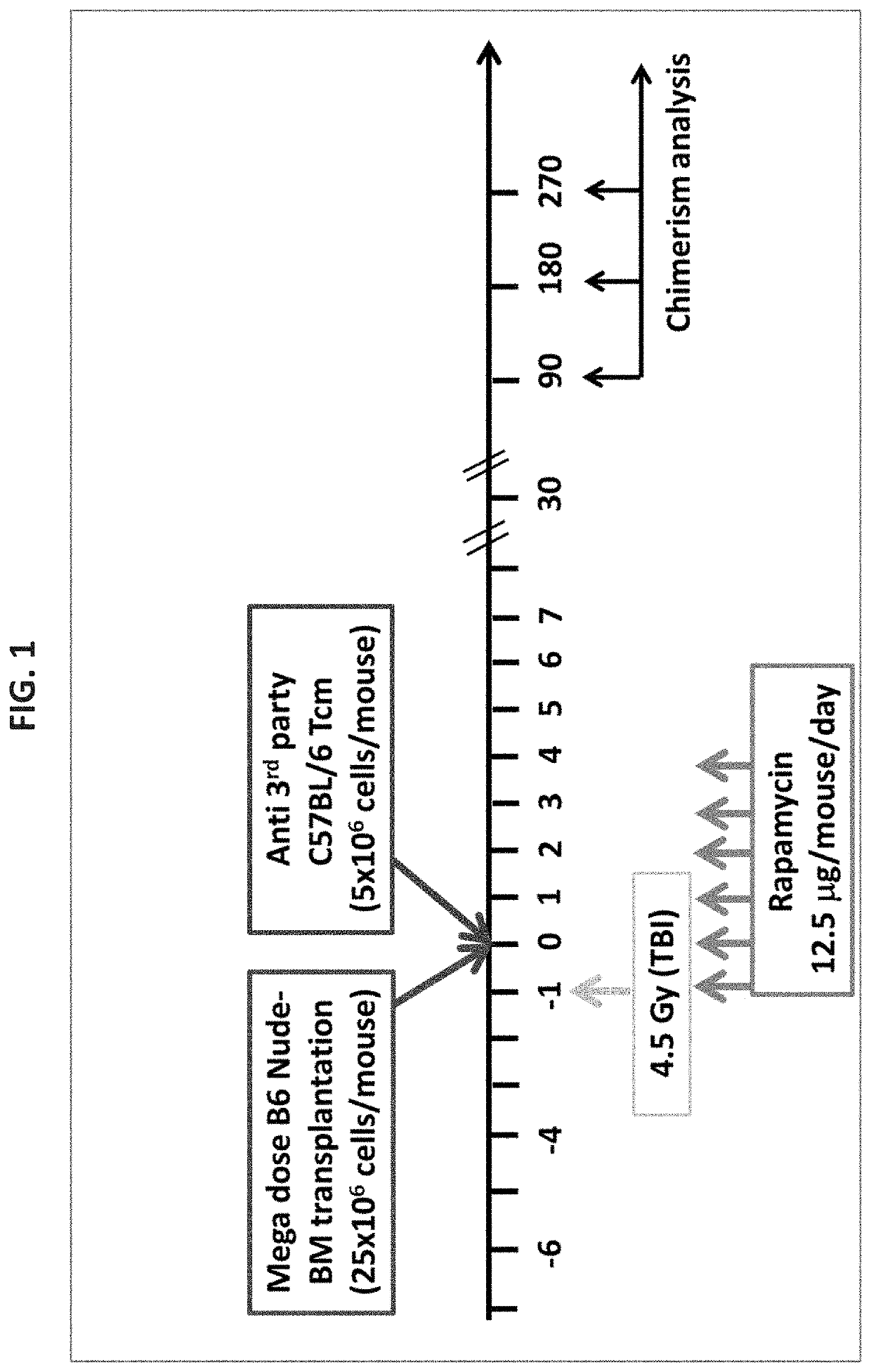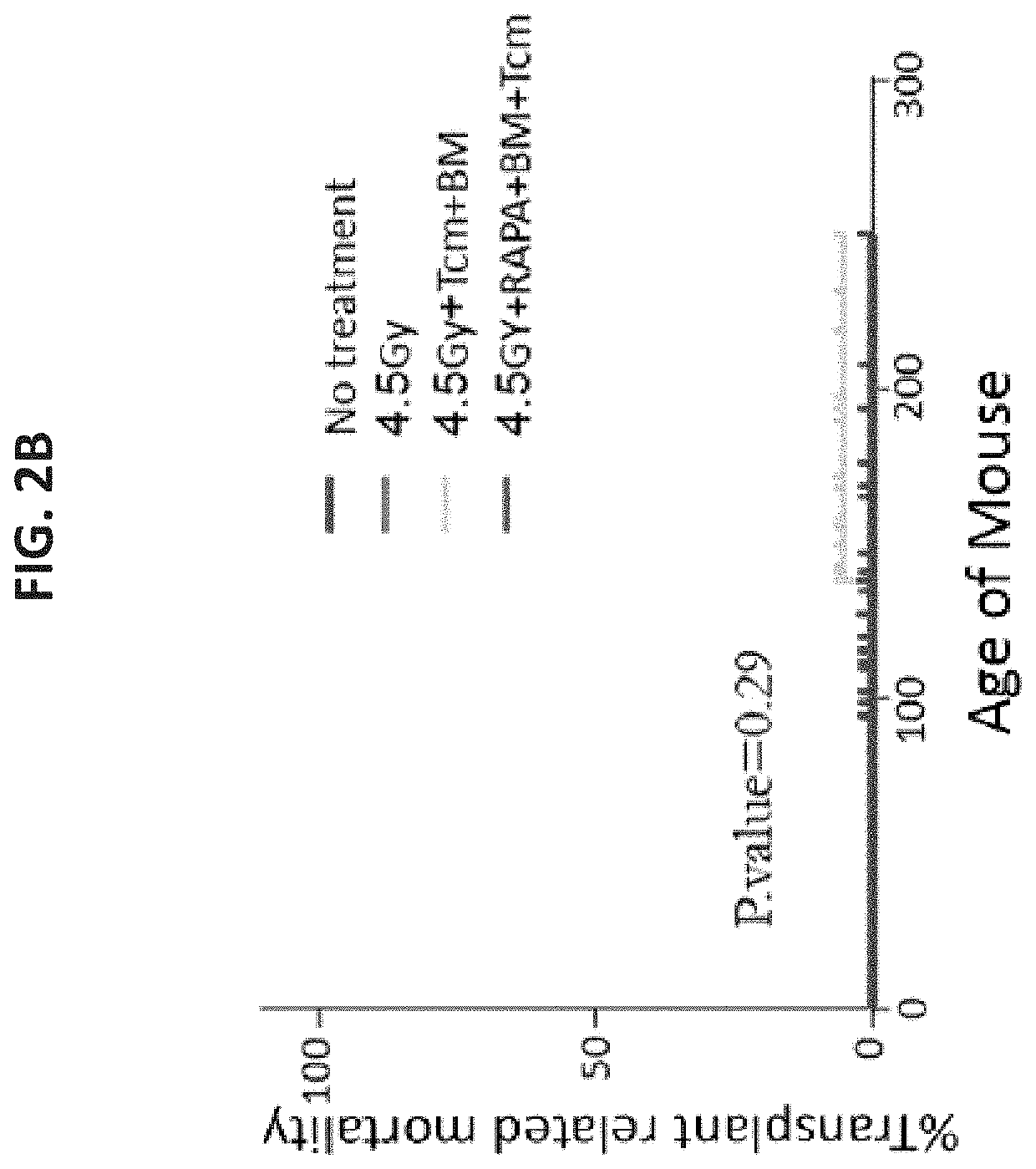Use of veto cells in treatment of t cell mediated autoimmune diseases
a technology of t cell mediated autoimmune diseases and veto cells, which is applied in the direction of antibody medical ingredients, drug compositions, unknown materials, etc., can solve the problems of permanent state of medicine-free disease remission and neither the physiological mechanism of self-tolerance is restored
- Summary
- Abstract
- Description
- Claims
- Application Information
AI Technical Summary
Benefits of technology
Problems solved by technology
Method used
Image
Examples
example 1
Treatment of T Cell Mediated Diabetes Using Veto Tcm Cells and T Cell Depleted Bone Marrow Transplant Following a Reduced Intensity Conditioning
[0540]In this study, Tcm veto cells were generated from splenocytes obtained from C57BL / 6 donors (H-2b) cultured against irradiated third-party splenocytes (FVB; H-2q), under cytokine deprivation. The selective expansion of CD8 mouse T cells against 3rd party stimulators under these conditions leads to selective ‘death by neglect’ of bystander anti-host T cell clones that could mediate graft versus host disease (GVHD); such cells are further diluted out by subsequent expansion of anti-3rd party T clones during further culture in the presence of IL-15. In addition to causing selective loss of GVH reactive T cells, these culture conditions induce a central memory phenotype shown to be crucial for robust veto activity in vivo.
[0541]To evaluate the safety and efficacy of such a transplant for diabetes therapy, 8 week old NOD (H-2d) mice (before ...
example 2
Veto Tcm Persistence in Transplanted NOD Mice
[0545]The question of Tcm survival in recipient NOD mice is of major interest for evaluation of tolerance persistence as well as for future applications of these veto cells. To that end, Tcm veto cells were generated from GFP mice (C57BL background). Cells were transplanted according to the same protocol described in FIG. 1 (e.g. 4.5 Gy irradiation, Rapamycin treatment from day −1 to day +4, and megadose B6 nude bone marrow along with veto cells on day 0. One-year post transplantation, mice were sacrificed, and lymphoid organs were evaluated by Two-photon laser scanning microscopy. As shown in FIGS. 6A-D, in three evaluated mice, GFP+ Tcm cells were present in the spleen and in several types of lymph nodes.
example 3
T Cell Repertoire Analysis of Diabetes Prevention in Chimeric NOD Mice Supports a Deletion-Based Mechanism
[0546]Accordingly, T cell repertoire analysis was performed in search for the mechanism underlying the prevention of diabetes development. Comparison between the variable complementary-determining regions (CDR3) in the T cell receptors of mice demonstrated higher sharing level between amino acids in the young non-treated mice as shown in FIG. 7A. In contrast, the treated mice had a lower sharing level of sequences.
[0547]Evaluation of the Vβ usage revealed different usage between CD4 and CD8 as expected. Notably, CD8 Vβ usage of treated mice was different from CD8 Vβ usage in the non-treated mice (FIG. 7B). Different Vβ usage of CD4 and CD25 was also seen when comparing treated to non-treated mice.
[0548]Next, known CDR3 sequences connected to type I diabetes mellitus [Gioia L. et al. Sci Immunol (2019) 4(38):10; Baker R L et al. Diabetes (2018) 67(9):1836-1846] were searched and ...
PUM
| Property | Measurement | Unit |
|---|---|---|
| weight | aaaaa | aaaaa |
| weight | aaaaa | aaaaa |
| weight | aaaaa | aaaaa |
Abstract
Description
Claims
Application Information
 Login to View More
Login to View More - R&D
- Intellectual Property
- Life Sciences
- Materials
- Tech Scout
- Unparalleled Data Quality
- Higher Quality Content
- 60% Fewer Hallucinations
Browse by: Latest US Patents, China's latest patents, Technical Efficacy Thesaurus, Application Domain, Technology Topic, Popular Technical Reports.
© 2025 PatSnap. All rights reserved.Legal|Privacy policy|Modern Slavery Act Transparency Statement|Sitemap|About US| Contact US: help@patsnap.com



